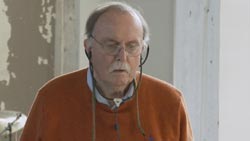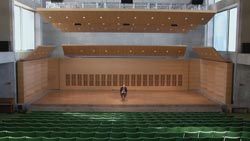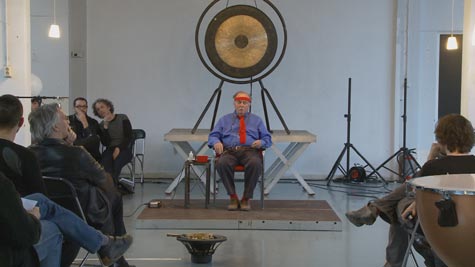 |  |  |  |
 |  |
Music for Solo Performer (1965)“I could see the cones of the speakers moving in and out, it was very dramatic, the cones of the loudspeakers actually like percussion players, like performers.”  In 1965 Lucier met the scientist Edmond Dewan who was investigating alpha brainwaves. Dewan asked Lucier if he would be interested in using his equipment to detect alpha waves in order to use them for a piece of music. Lucier, at that time not composing at all, seized the opportunity. In thinking about what to do with brain waves in musical terms, he realized that alpha waves are so low (around 8-13 cycles per second) that it would be more straightforward to think of them as rhythms and to create a piece for percussion. Alpha waves are produced only with eyes closed, in a relaxed mental state, without any activity. Considering this, Lucier decided to “take a dangerous course which is to sit on stage and try to produce alpha waves, live, in front of the audience.” This means that once the electrodes are attached to his head, the performer has to sit on stage without doing anything. Eventually his brain will enter the alpha state. The brainwaves are constantly picked up with the electrodes and amplified with a brain wave amplifier. A filter allows only the alpha waves to pass through. Then the signal is split into several channels, and each channel is amplified and routed to a loudspeaker. The cones of the speakers follow the alpha rhythm and make percussion instruments sound, either by hitting them directly or by the motion of the air. One or two assistants control the volume of the individual channels, and in doing so determine the musical shape of the piece. | THE FILM | |||

